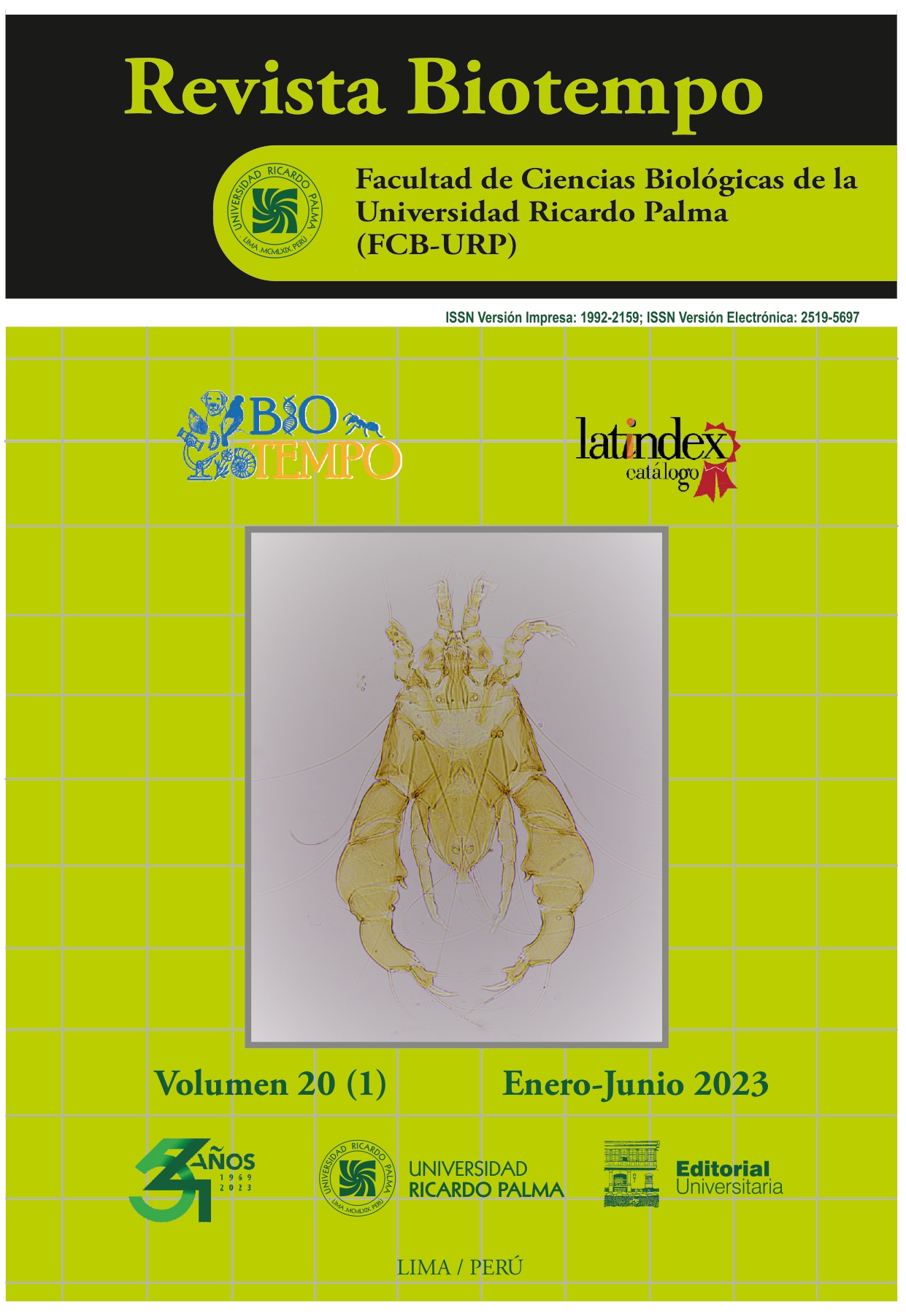Uso y desecho de medicamentos del botiquín familiar desde la educación ambiental
DOI:
https://doi.org/10.31381/biotempo.v20i1.5717Palabras clave:
botiquín domiciliario , conocimiento , educación ambiental , medicamentosResumen
El objetivo del estudio fue describir el uso y desecho de medicamentos del botiquín familiar desde la educación ambiental. El estudio se realizó de enero a octubre de 2022 con 72 estudiantes del programa académico de Farmacia y Bioquímica de la Universidad Nacional “San Luis Gonzaga”, Ica, Perú. Se aplicó, una encuesta virtual mediante “Google form” con nueve preguntas donde el estadígrafo descriptivo fue el análisis de tendencia relativa del porcentaje. El almacenamiento en el botiquín representó el mayor porcentaje: 46,94%. El 10,20% de los estudiantes, desconoce que los medicamentos contaminan y el 18,37%, tampoco conoce qué los desechos de medicamentos al consumirse por animales y transferirse al humano dañan la salud. El 6,12% de los estudiantes, no conoce que existen contenedores de medicamentos y se registró que el 14,29% los elimina inadecuadamente en el hogar donde el mayor porcentaje de eliminación fue para el vencimiento y no consumo: 46,94%. La eliminación anual fue el porcentaje mayor (42,86%) y se produce por trituración (95,92%), donde los antibacterianos fueron el grupo terapéutico con mayor frecuencia de eliminación (46,95%) y los antibióticos el menor (2,04%). Se concluye, que se requiere implementar una educación ambiental ante la disposición y desecho de medicamentos del botiquín familiar para los estudiantes universitarios, pues existió desconocimiento desde su almacenamiento, eliminación e impacto a la salud pública y el medio ambiente.









